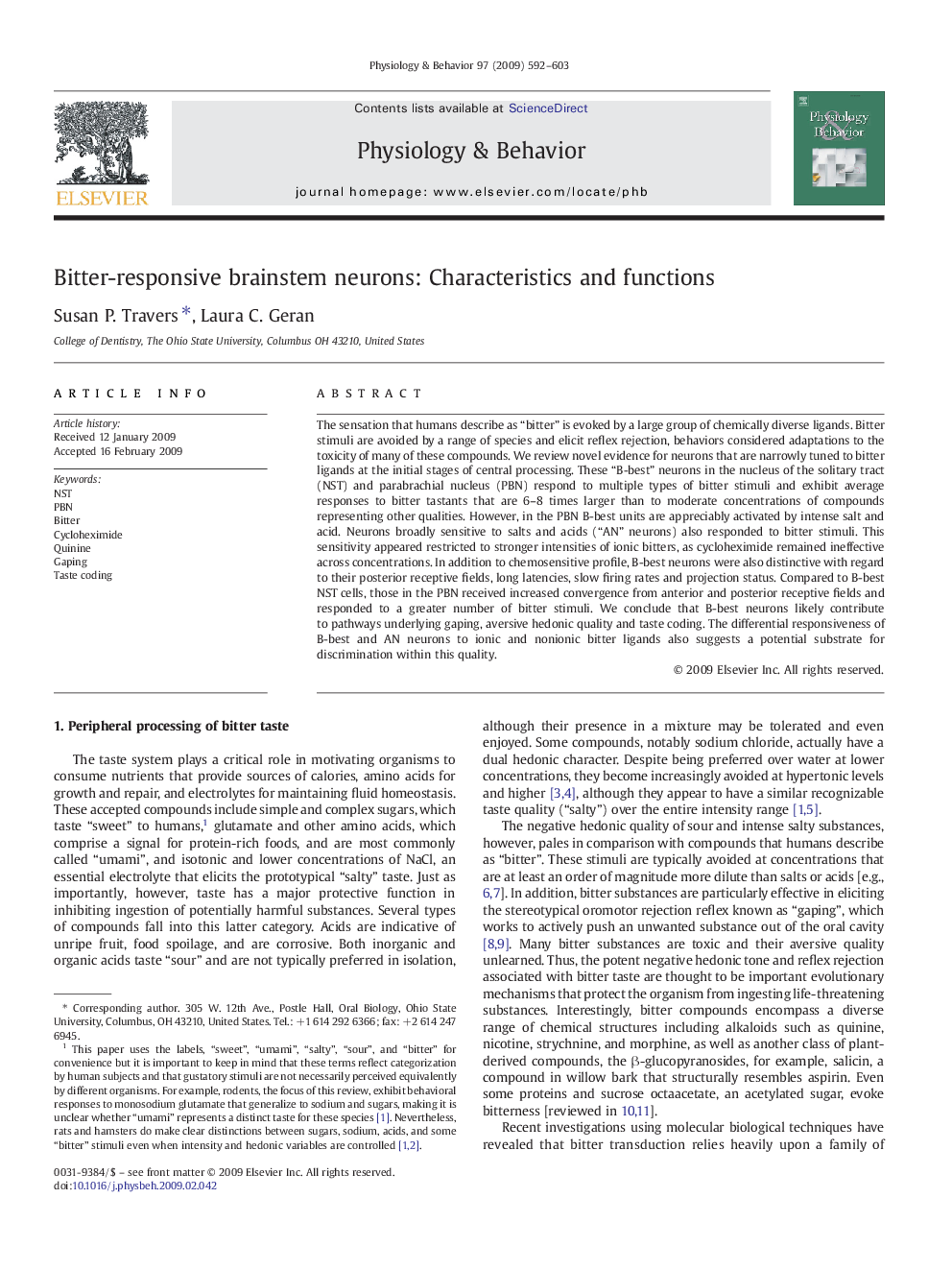| کد مقاله | کد نشریه | سال انتشار | مقاله انگلیسی | نسخه تمام متن |
|---|---|---|---|---|
| 2845264 | 1166385 | 2009 | 12 صفحه PDF | دانلود رایگان |

The sensation that humans describe as “bitter” is evoked by a large group of chemically diverse ligands. Bitter stimuli are avoided by a range of species and elicit reflex rejection, behaviors considered adaptations to the toxicity of many of these compounds. We review novel evidence for neurons that are narrowly tuned to bitter ligands at the initial stages of central processing. These “B-best” neurons in the nucleus of the solitary tract (NST) and parabrachial nucleus (PBN) respond to multiple types of bitter stimuli and exhibit average responses to bitter tastants that are 6–8 times larger than to moderate concentrations of compounds representing other qualities. However, in the PBN B-best units are appreciably activated by intense salt and acid. Neurons broadly sensitive to salts and acids (“AN” neurons) also responded to bitter stimuli. This sensitivity appeared restricted to stronger intensities of ionic bitters, as cycloheximide remained ineffective across concentrations. In addition to chemosensitive profile, B-best neurons were also distinctive with regard to their posterior receptive fields, long latencies, slow firing rates and projection status. Compared to B-best NST cells, those in the PBN received increased convergence from anterior and posterior receptive fields and responded to a greater number of bitter stimuli. We conclude that B-best neurons likely contribute to pathways underlying gaping, aversive hedonic quality and taste coding. The differential responsiveness of B-best and AN neurons to ionic and nonionic bitter ligands also suggests a potential substrate for discrimination within this quality.
Journal: Physiology & Behavior - Volume 97, Issue 5, 14 July 2009, Pages 592–603